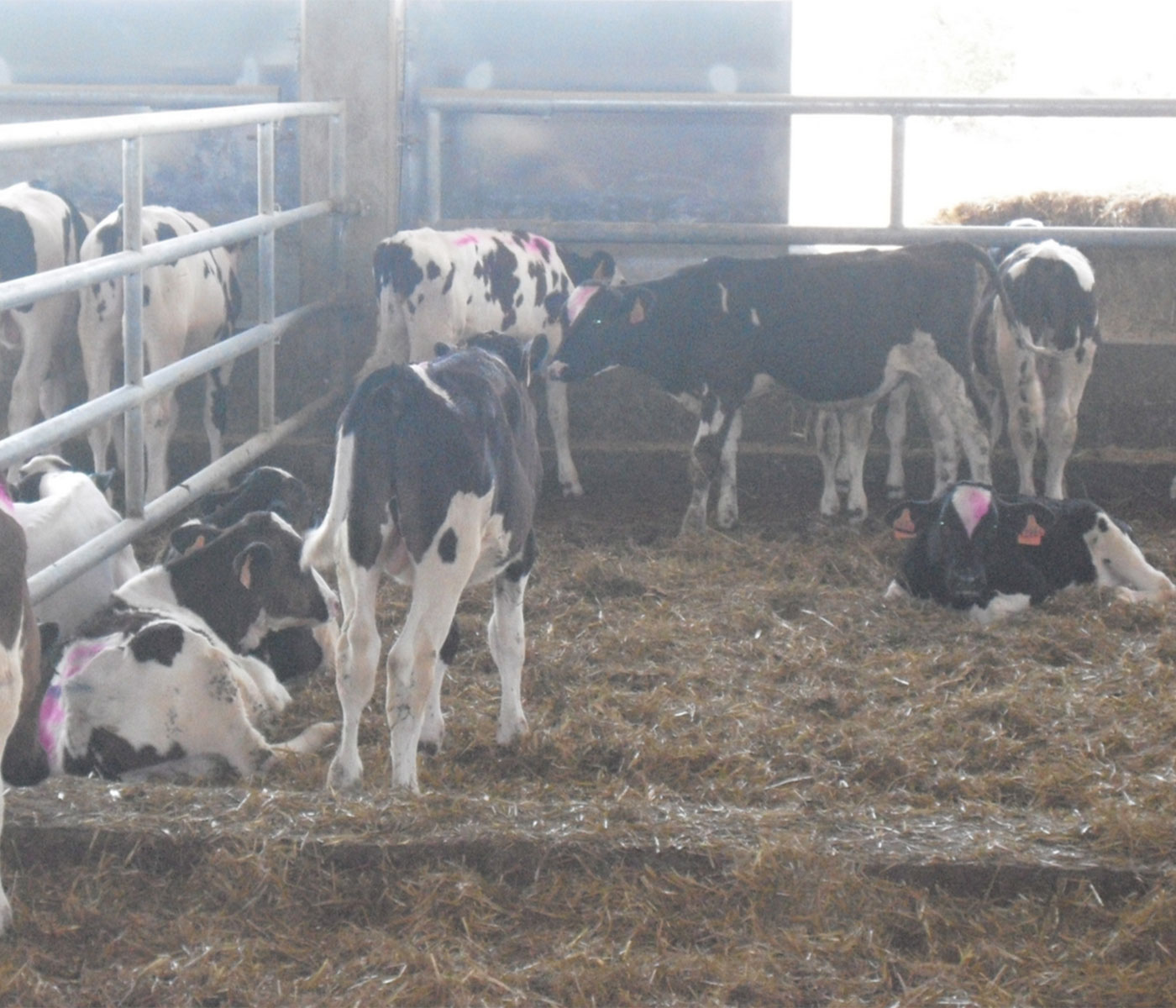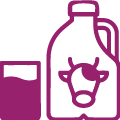Therefore, in order to reduce the incidence of disease (especially respiratory complications) as well as mortality, there is an excess use of antibiotics within this type of production system.
 02 Jan 2023
02 Jan 2023
Points to consider
Management that can affect well-being
![]()
These lactating calves are considered a by-product in many dairies. Hence, they don’t always receive the best care and feeding.
In addition, they are transported at a young age without having their immune system well developed, and the management around transport involves stress and undernourishment which affects their health and overall well-being.
These lactating calves arrive with high stress levels and with a negative energy balance due to suboptimal feeding prior to transport plus the fasting hours they are subjected to during transport.

These restrictions and prolonged fasting affect the gastrointestinal tract of calves, causing an increase in intestinal permeability while reducing the number of enterocytes. This hinders the digestibility of feed and prolongs the recovery of intake levels in these animals. Hence, feed intake in these calves takes approximately 2 weeks after arrival to be completely restored.
Therefore, in order to reduce the incidence of disease (especially respiratory complications) as well as mortality, there is an excess use of antibiotics within this type of production system.
The importance of colostrum
![]()
Feeding after birth has a major impact on the recovery of these animals.
 First: The importance of a good birth encephalon.
First: The importance of a good birth encephalon.
![]()
Colostrum has as its first function to provide immunity to calves, but also bioactive substances that help the development of the gastrointestinal tract.
![]()
Poorly placed calves have weight loss during the first 14 days of life, immunity levels are lower upon arrival at the farm and makes these animals more susceptible to diseases, dilating the recovery time of intake.
Transport
![]() On the other hand: Diet during transport also plays an important role in the recovery of these animals.
On the other hand: Diet during transport also plays an important role in the recovery of these animals.
![]() Animals that have been collected and transferred to a concentration center where they are fed with rehydrating agents instead of lacto-replacers before the last transport to the mamonera reduces glucose levels and increases the mobilization of reserves making recovery difficult upon arrival of these animals.
Animals that have been collected and transferred to a concentration center where they are fed with rehydrating agents instead of lacto-replacers before the last transport to the mamonera reduces glucose levels and increases the mobilization of reserves making recovery difficult upon arrival of these animals.
![]() Some nutritional strategies such as providing calves with concentrate before the last transport or availability of acidified milk between milk replacement feedings in the collection centers allow to reduce the impact of fasting and recover the consumption more quickly upon arrival at the mamonera
Some nutritional strategies such as providing calves with concentrate before the last transport or availability of acidified milk between milk replacement feedings in the collection centers allow to reduce the impact of fasting and recover the consumption more quickly upon arrival at the mamonera
However, there is still a long way to go, such as defining criteria to consider these animals suitable before being transported in dairies.
In Summary
Upon arrival we still have to deepen and study how to improve nutritional strategies in the reception of lactating calves, know the impact of other factors such as the mixture of origins, and above all, work with the minimum use of antibiotics.
![]() Only if we can demonstrate that the collection and transfer of lactating calves from dairies to feedlots has a minimal impact on their welfare and that this does not imply antibiotic overuse will we be able to maintain current production systems. On the other hand the debate is set to continue, and it could be that animals were only allowed to be transported after weaning or over very short distances.
Only if we can demonstrate that the collection and transfer of lactating calves from dairies to feedlots has a minimal impact on their welfare and that this does not imply antibiotic overuse will we be able to maintain current production systems. On the other hand the debate is set to continue, and it could be that animals were only allowed to be transported after weaning or over very short distances.
Source: Authors: Devant, Maria; Marti, Sònia. Researchers in Ruminant Production at IRTA Torre Marimon,
Subscribe now to the technical magazine of animal nutrition
AUTHORS

Nutritional Interventions to Improve Fertility in Male Broiler Breeders
Edgar Oviedo
The Use of Organic Acids in Poultry: A Natural Path to Health and Productivity
M. Naeem
Synergistic Benefits of Prebiotics and Probiotics in Poultry, Swine, and Cattle
Gustavo Adolfo Quintana-Ospina
Hybrid Rye Potential in Laying Hen Feed Rations
Gwendolyn Jones
A day in the life of phosphorus in pigs: Part I
Rafael Duran Giménez-Rico
Use of enzymes in diets for ruminants
Braulio de la Calle Campos
Minerals and Hoof Health in the Pregnant Sow
Juan Gabriel Espino
Impact of Oxidized Fats on Swine Reproduction and Offspring
Maria Alejandra Perez Alvarado